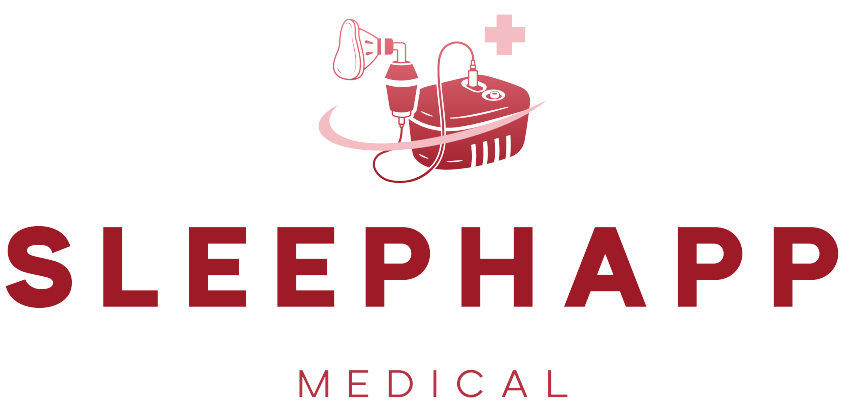The Science Behind CPAP Therapy: How It Works to Treat Sleep Apnea
Home » The Science Behind CPAP Therapy: How It Works to Treat Sleep Apnea

Table of Contents
Sleep apnea is a common sleep problem affecting millions of people worldwide. This disorder causes breathing to stop and start during sleep. It lowers sleep quality and can harm health.
A popular treatment for OSA is CPAP therapy. CPAP stands for Continuous Positive Airway Pressure. It uses a machine with a mask to blow air. The air keeps the airway open and stops breathing problems.
This post will explain how CPAP helps treat sleep apnea.
The History of CPAP Machines
CPAP machines have helped treat sleep apnea since 1981. Dr. Colin Sullivan created the first CPAP machine. He got the idea when he saw how his mother’s vacuum cleaner made a steady airflow.
Before this, people needed surgery to treat sleep apnea. Dr. Sullivan found that a mask, Tubing, and a machine that blows air could help. This was a significant discovery. But at first, many people did not believe it would work. It took five years before CPAP machines were available for everyone to use.
What is Sleep Apnea?
In sleep apnea, a person’s airway might collapse or get blocked as they sleep. Often, this results from too-relaxed throat muscles closing the airway. The most often occurring kind is Obstructive Sleep Apnea (OSA). This disorder wakes the individual up by stopping oxygen flow. Sleep apnea without treatment can cause low energy, heart disease, and stroke, among other major medical issues.
What Causes Sleep Apnea?
Sleep apnea can happen for many reasons. Being overweight is a common cause. Smoking and drinking alcohol can also increase the risk. If someone in your family has it, you might get it, too. Some health problems, like diabetes, high blood pressure, and heart disease, can make sleep apnea more likely. To learn more about managing sleep apnea and how therapies like CPAP can help, visit The Science Behind CPAP Therapy: How It Helps Sleep Apnea.
Effects of Sleep Apnea
- Sleep apnea symptoms can vary by type and severity.
- Common signs include loud snoring and breathing pauses during sleep.
- You might gasp or choke while sleeping.
- People often feel tired during the day.
- Morning headaches are also a common problem.
- Other symptoms include irritability and trouble focusing.
Why Do Airways Collapse In Sleep Apnea?
Throat muscles relax during sleep. People with sleep apnea have muscles that are too relaxed, which close their airways. This shuts off oxygen, which wakes the person to breathe. CPAP therapy stops this by maintaining mild pressure on the airway and preventing its collapse.
How Does CPAP Work?
A CPAP machine delivers a steady flow of air through a mask, which covers the nose, mouth, or both. This gentle air keeps the airway open and prevents breathing problems.
Main Parts of a CPAP System
- CPAP Machine: Makes pressurized air.
- Tubing: Links the machine to the mask.
- Mask: Fits over the airway to give air.
The Process in Action
- Pressure Delivery: The machine sends air through the Tubing.
- Airway Support: The air keeps throat tissues from blocking the airway.
- Steady Breathing: You breathe smoothly all night for better, deeper sleep.
For more details, check out How Does CPAP Work? The Science Behind Better Sleep.
The Mechanisms Behind CPAP Therapy
CPAP is “Continuous Positive Airway Pressure.” This machine sends a consistent air stream across a mask. This air pressure maintains the airway open. The machine runs like this:
- The CPAP machine’s compressor generates consistent air pressure, which keeps the throat muscles from closing.
- The Tubing lets air flow by linking the machine to the mask.
- The mask passes air straight to the airway over the nose or mouth.
This consistent airflow maintains oxygen levels steady, keeps the airway open, and helps to prevent the airway from collapsing. CPAP treatment helps people breathe naturally while they sleep.
Benefits of CPAP Therapy
Beyond only enhancing sleep, CPAP therapy has many health advantages. These are the principal benefits:
- CPAP lowers the risk of heart disease and lessens stress on the heart by consistent breathing.
- People who use CPAP report feeling less tired and more awake since they obtain deeper, uninterrupted sleep.
- CPAP therapy helps people sleep more peacefully by lowering the frequency of times breathing stops during sleep.
- CPAP treatment maintains constant oxygen levels, thus strengthening the brain and heart.
CPAP Machine Pressure Programmable Settings
Doctors set CPAP machines to a particular air pressure level for every patient. We measure this pressure in “cmH2O,” or centilitres of water pressure. Pressures are expected to fall between 4 and 20 cmH2O. Specific CPAP machines can automatically change pressure depending on breathing patterns.
Comfort Elements of CPAP Devices
Comfort features on more recent CPAP devices help to simplify treatment by:
- These heated humidifiers help to prevent nose and throat dry-out.
- Heated Tubing helps to prevent too-cold air, facilitating breathing.
- Some machines change pressure in response to breathing out, increasing comfort.
Common CPAP Therapy Challenges
CPAP therapy helps treat sleep apnea, but some people face issues. They may struggle to wear the mask, and picking the right mask can be hard. Some feel trapped or claustrophobic, and others get a dry mouth or nose.
Conclusion
CPAP treatment is straightforward and successful for obstructive sleep apnea. Maintaining an open airway preserves oxygen flow and helps prevent pauses in breathing. Not only does CPAP therapy help with sleep, but it also protects heart health, boosts energy, and lowers the risk of severe diseases, including stroke. The consistent air pressure of CPAP helps those with sleep apnea breathe better and lead better lives.
Sources:
- https://www.saskatoon-cpap.ca/blog/the-science-behind-cpap-therapy-how-it-helps-sleep-apnea
- https://cpappros.ca/how-does-cpap-work-the-science-behind-better-sleep/
- https://www.verywellhealth.com/sleep-apnea-what-is-my-goal-ahi-with-cpap-treatment-3015054
- https://www.sleepfoundation.org/sleep-apnea/treatment
